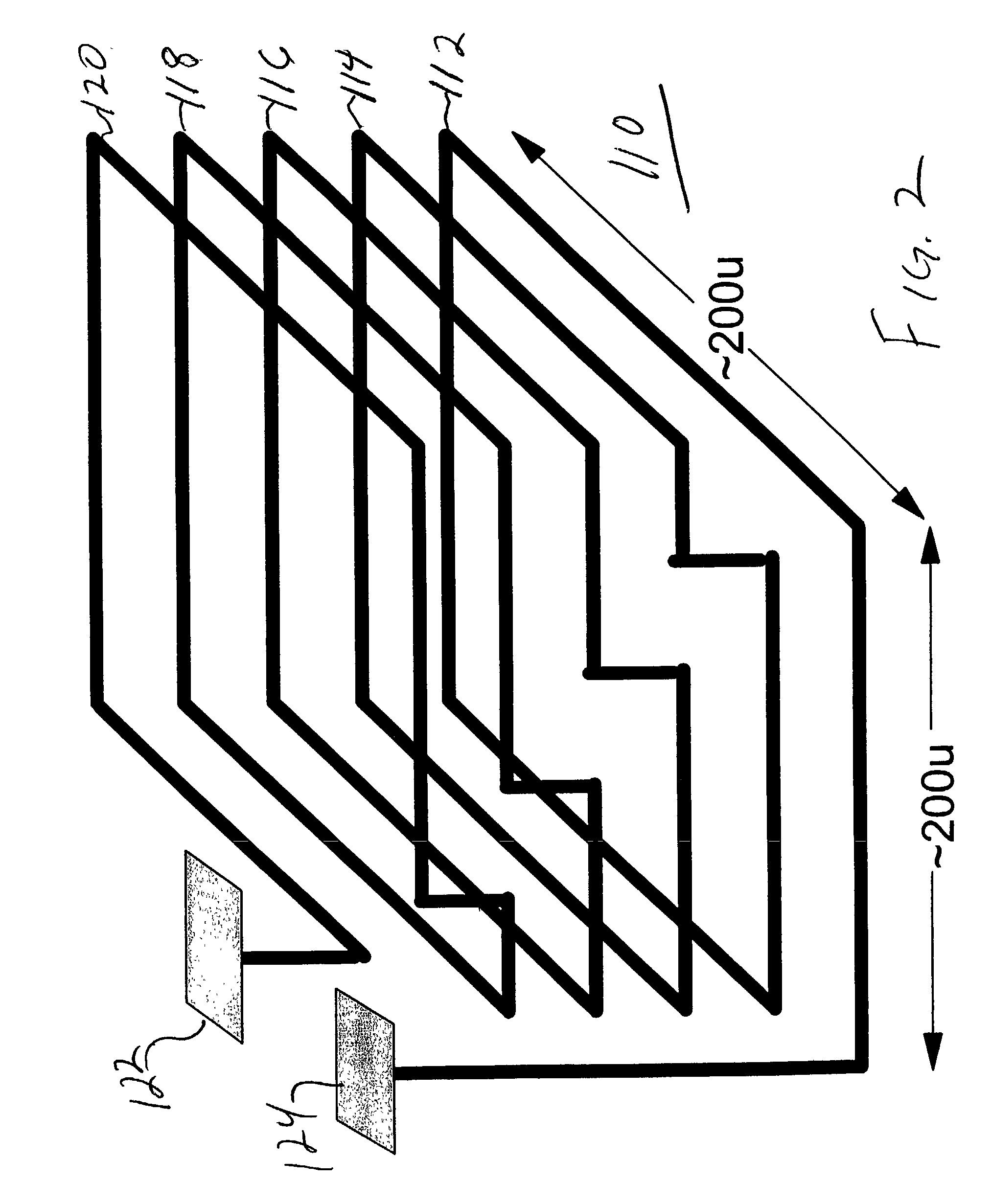High speed data channel including a CMOS VCSEL driver and a high performance photodetector and CMOS photoreceiver
a high-performance, optical data technology, applied in the direction of lasers, semiconductor lasers, solid-state devices, etc., can solve the problems of not being suitable for such bandwidths, copper wiring, and the data interconnect medium of most state-of-the-art optical channels, and achieving the performance of high-performance communications devices. , the performance of the high-performance optical driver and the receiver is los
- Summary
- Abstract
- Description
- Claims
- Application Information
AI Technical Summary
Problems solved by technology
Method used
Image
Examples
first embodiment
[0061] FIGS. 14A-B are examples of preferred embodiment photoreceivers 280, 290. In the first embodiment, the 13 finger 25 .mu.m photodetector 282 is attached between a supply voltage, e.g., V.sub.dd, and the input 284 of a CMOS inverter 286, which is the gate of NFET 286N and PFET 286P. A precharge pass gate 288 is connected to the inverter input 284 and gated by a clock. Preferably, for quicker response, the precharge voltage is less than half V.sub.dd and more preferably one third (1 / 3) V.sub.dd, i.e., at or below V.sub.T. Total node capacitance at the inverter input 284 is on the order of 20 femtoFarads (fF). When the clock (clk) is high, pass gate 288 is on discharging the inverter input 284 to the precharge voltage. The clock returns low to turn pass gate 288 off, the inverter input 284 remains at the precharge voltage and the inverter output is high. When 1 mW laser light strikes the photodetector 282, it passes 200 .mu.A, which charges the inverter input. Since, Q=CV and I=C...
embodiment 280
[0062] FIG. 14B shows an example of a Trans Impedance Amplifier (TIA) photoreceiver 290, which includes three inverters 292, 294, 296 and feed back impedance or resistor 298. In this embodiment the 13 finger 25 .mu.m photodetector 282 is attached between a supply voltage, e.g., V.sub.dd, and the input node 300 to one inverter 292 at bias resistor 298. Bias resistor 298 is selected to keep the three inverters from oscillating and stable at a steady state equilibrium voltage with no light to the photodetector 282. When light is provided to the photodetector 282, the photodetector 282 passes current to pull input node 300 high. In response, inverter 292 drives its output, the input to inverter 294, low. Inverter 294 drives its output, the input to inverter 296, high. Inverter 296 drives its output low. By biasing the 3 inverters 292, 294, 296 at equilibrium the TIA 290 has a much faster response time than the simple embodiment 280 of FIG. 14A. Thus, the photoreceivers 280, 290 of FIGS....
PUM
 Login to View More
Login to View More Abstract
Description
Claims
Application Information
 Login to View More
Login to View More - R&D
- Intellectual Property
- Life Sciences
- Materials
- Tech Scout
- Unparalleled Data Quality
- Higher Quality Content
- 60% Fewer Hallucinations
Browse by: Latest US Patents, China's latest patents, Technical Efficacy Thesaurus, Application Domain, Technology Topic, Popular Technical Reports.
© 2025 PatSnap. All rights reserved.Legal|Privacy policy|Modern Slavery Act Transparency Statement|Sitemap|About US| Contact US: help@patsnap.com



